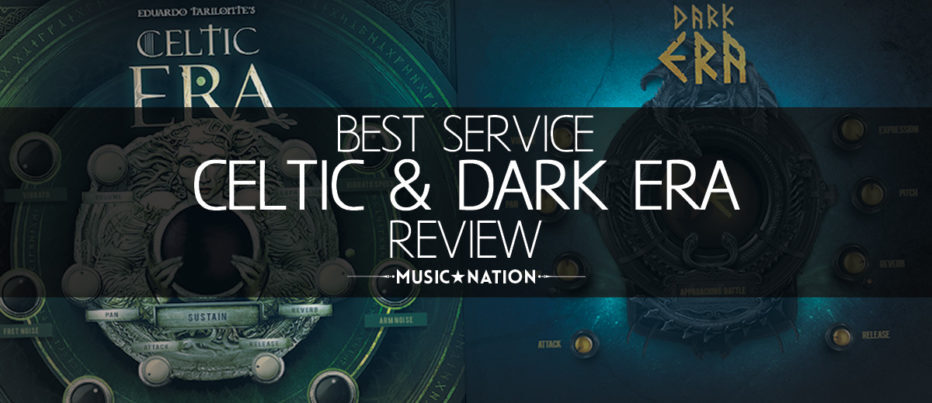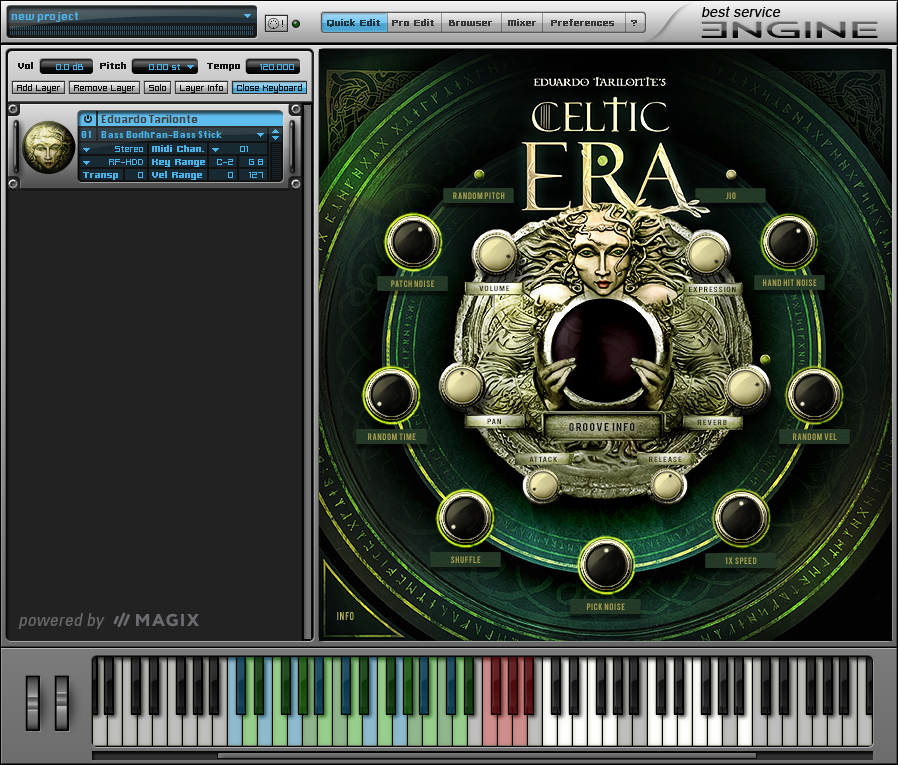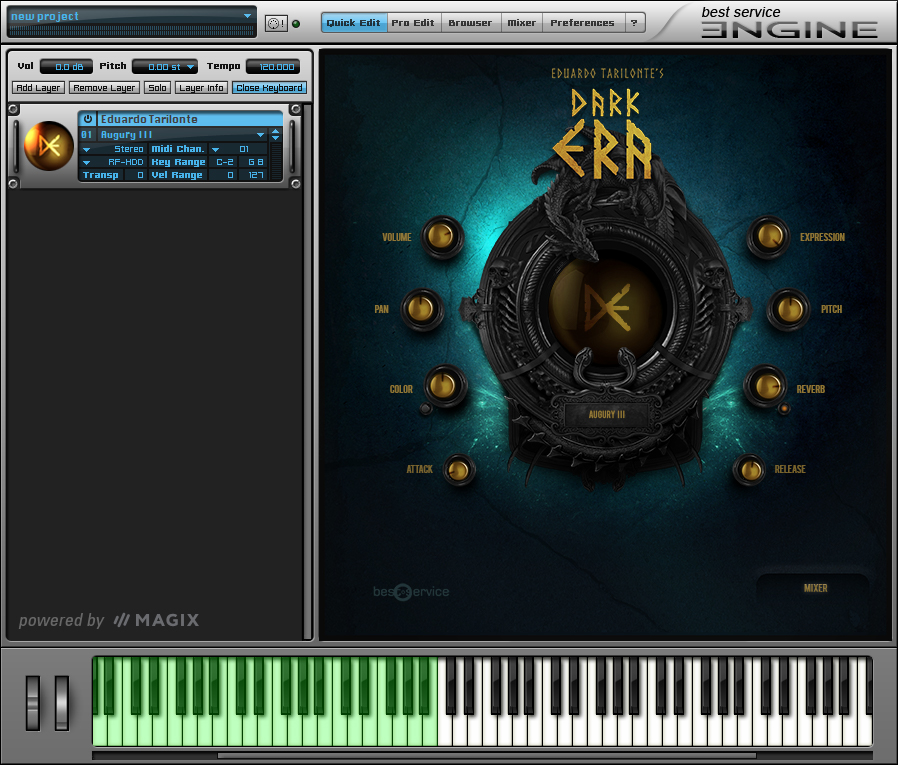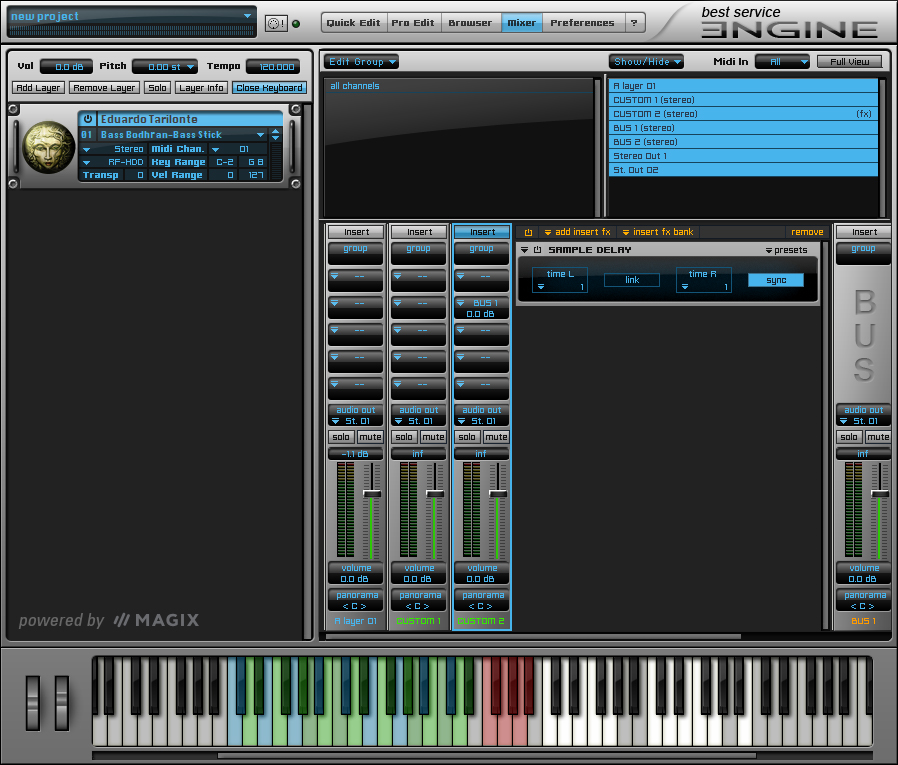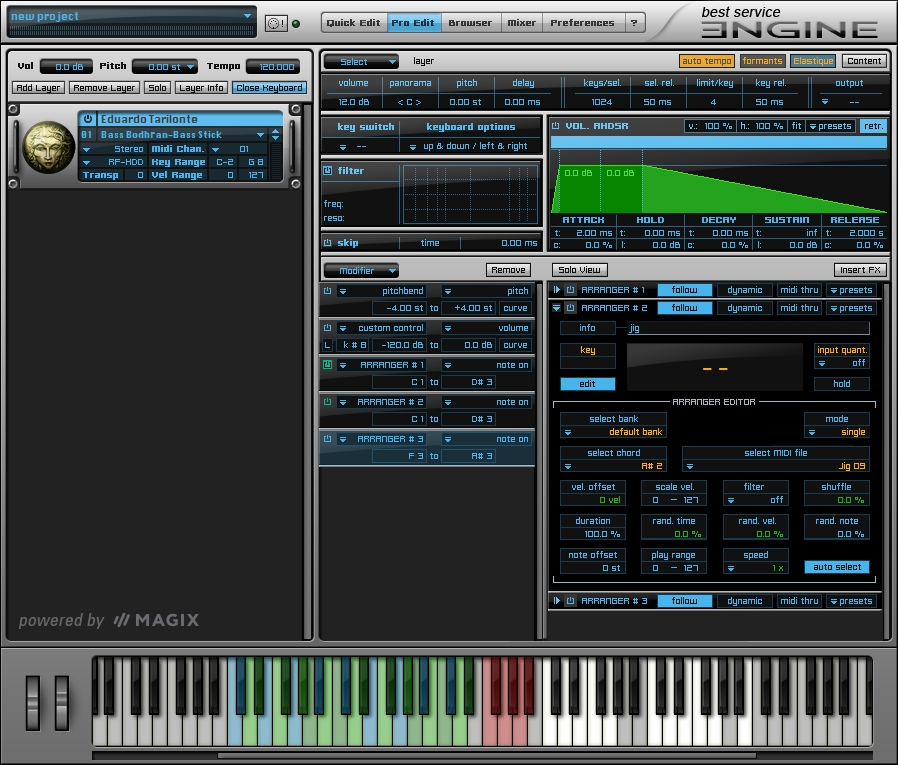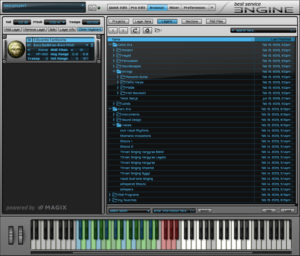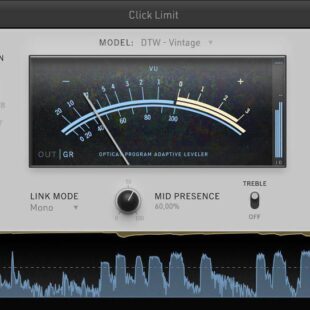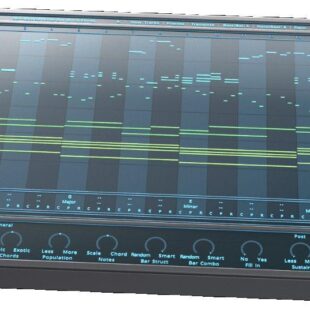BEST SERVICE: DARK ERA AND CELTIC ERA – DOUBLE-EDGED SWORD
The ERA range from Best Service could be considered flagship titles. They are separate products, but there is a strong relationship between the two so it makes sense to review them both at the same time.
This is the first time we have reviewed a Best Service Engine product, so I’m looking forward to pushing the capabilities of the platform.
There are surprisingly few competitors in this market space so anyone producing music or sound design with medieval themes should be interested in this range.
Overview
Both Dark ERA and Celtic ERA are VST-compatible sample library expansions for the ‘Engine 2’ platform from designer Eduardo Tarilonte. The libraries contain medieval-type instruments spanning many diverse cultures but with a relatively similar genre, both suitable for game, film and television sound design.
These two products expand and complement others in the ‘ERA’ range, including Ancient, Vocal Codex and Medieval Legends.
Dark ERA contains 50 or so voice, wind, string and plucked categories with a huge selection of percussion instruments. The focus is more on epic battles, army marches, war drums and the like.
Celtic ERA is much lighter in tone. With 23 wind, string and percussive instruments, the focus is more towards uplifting, happy and whimsical traditional music.
Both libraries require a modern PC/Mac with a suitable amount of RAM. Our 16GB RAM test machine ran everything adequately with no discernible glitching or DSP issues.
Engine 2
As with Native Instrument’s Kontakt, EastWest’s Play or UVI’s Falcon, the core software platform Engine 2 needs to be loaded first before you can populate it with sound banks. As with the others, multiple banks can be loaded, mixed, layered and affected as you require.
The performance feels rather good, though it is difficult to compare as Engine 2 libraries do not load into competitor systems. But considering the size of each patch tested, everything feels snappy and I encountered no real lag or unnecessary system drain. Loading times between patches are minimal, with only the larger multi-articulation patches taking more than a few seconds to load on our test machine.
The UI design, on the other hand, is a major disappointment. Engine 2 is in serious need of a makeover from the circa-1990 Windows 95 styling. The fonts are tiny and hard to read, with a weird styling that reeks amateur hour. The workflow, if you can call it that, is confusing and far from intuitive.
The system mixer is probably the poorest implementation I have encountered: it is overly complicated and fiddly. Though there is a huge amount of effects bundled in – all of which sound excellent, particularly the excellent Vandal amp simulator – everything requires menu diving and guesswork to see what happens.
The UI is mostly so bad I tend to totally ignore all the seemingly excellent effects and synthesis on offer in the back end and just focus on the expansion presets, opting for 3rd party processing if required.
Also, I did experience the odd crash when swapping presets. Nothing that required a DAW reset, mostly I just needed to reopen the Engine 2 plugin again. but there is some concern with the stability of the platform.
This platform really needs to be overhauled urgently. Doing so, I am sure, will provide what looks to be a flexible and full-featured environment.
Dark ERA and Celtic ERA
Leaving the woeful Engine 2 back end and moving to the Dark and Celtic ERA expansion libraries. Both libraries share a theme commonality but hold their own so far as instruments and play style are concerned.
I will focus on Dark ERA’s patch categories first. They are separated into three main sections: instruments, voices and sound design.
Instruments contain all of the playable percussion, wind and strings instrument; voices has a collection of vocal effects; and sound design contains the loops, pads and soundscape texture of the library.
There is a sizable collection of content, from dark and disturbing monk chanting to remarkably playable percussion, immersive textures and action loops. Some of the highlights are the Inuit throat singing patches, all being extremely playable and authentic sounding.
The dark core theme is wonderfully heavy sounding. The percussion presets are mammoth, war drum-like and powerful. The main motif comprises of battle drums, dark synth pads and animal-like chants, with variations of this used to great effect throughout the preset list.
All preset banks have a handy info tab that describes the instrument in detail, usually with a suggestion for playing and articulation information.
The rather appealing blue-on-gold design looks great, though the workflow is hindered by Engine 2’s scaling, or lack of it, so everything looks positively tiny, almost indecipherable.
The more playful and light Celtic ERA is a collection of Irish-type flutes, guitars, percussion and ambient textures. The manual says there is some Nordic influence in the sounds, which is definitely apparent, but on the whole, the library conjures images of the Scottish highlands and misty mountains of Ireland.
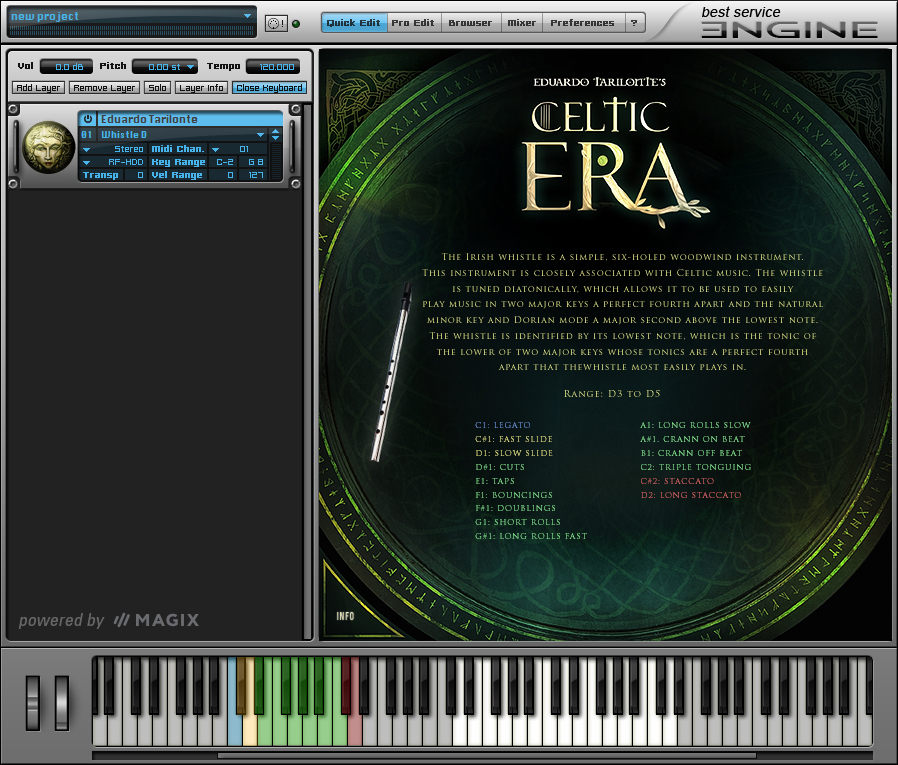
Each of the presets is addictively playable, even to the point that you can instinctively feel how the instrument should be played, even if you have never touched the real instrument before. Having said that, some degree of knowledge on how to play the selected instrument in the first place is beneficial.
The percussion patches are amazing, considering there are no key switches or articulations, just what looks to be very clever scripting. Realistic sample quality is one thing; it is quite another to design an instrument that even a novice can play to a convincing level on a MIDI controller.
Though there is a good amount of content included with both libraries I found much more interesting results came from layering presets – either between Dark and Celtic libraries, or 3rd party instruments – which really opens up creative ideas.
These libraries are undoubtedly a sound designer’s dream. Music producers will, I am sure, appreciate the libraries’ abilities to coexist well with other instruments. I discovered excellent results when using both Celtic and Dark ERA on heavy metal arrangements – a somewhat unlikely yet wonderful partnership.
I am delighted to see the Bullroarer included, we have a well-known traditional Maori instrument here in New Zealand called a Purerehua, which is basically the same thing. The sound is so sacred to us, it conjures strong feelings in the hearts of most Kiwis.
The acoustic guitar presets are also worthy of mention, again with great playability and unique tone.
All the presets are awash in the included reverb effect, which certainly adds a lot of ambiences. Removing the effect reveals mostly excellent raw recordings. Nothing has been covered up.
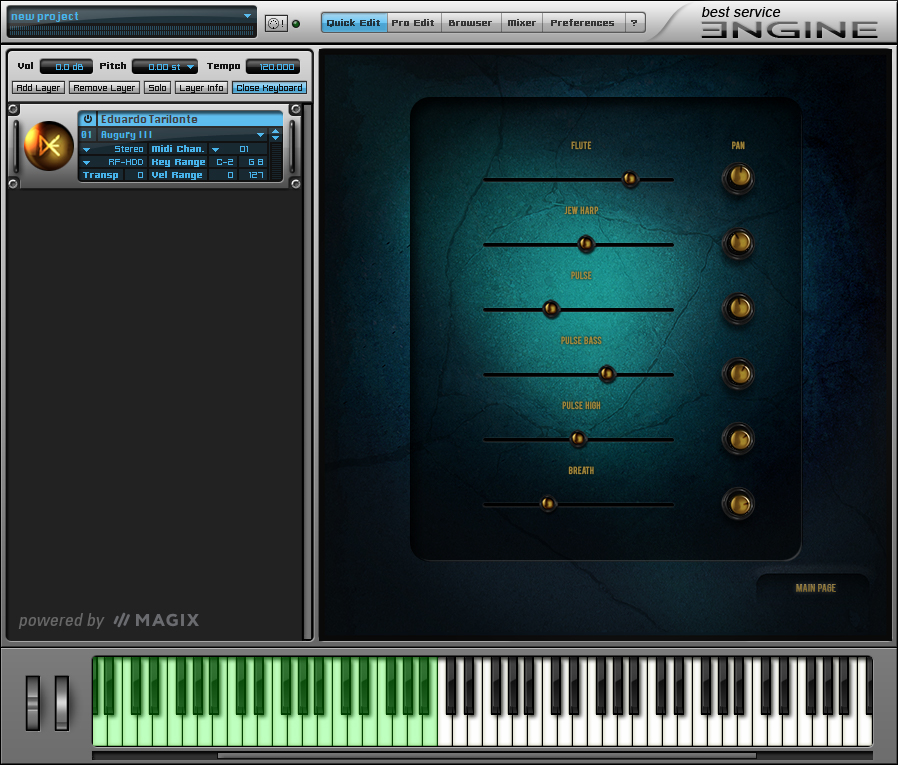
Conclusion
Dark and Celtic ERA libraries are similar in the genre yet vastly unique in application. Celtic Era is much lighter and more focused on traditional instruments, Dark Era is more thunderous and bombastic. In a ‘Jedi balance in the Force’ kind of way, they both complement each other by covering both ends of this medieval fantasy spectrum.
Both titles will partner well together and also with other sound libraries. These and others in the ERA series are a perfect accompaniment for any project requiring rich and authentic traditional style elements.
The immersive quality of the sounds is addictive and the overall playability of both instruments far outweighs the slightly one-dimensional dynamics.
I have some concerns about Engine 2’s design and stability, but the performance optimisation is clearly top-notch. A well-deserved makeover with a clearer and simplified workflow could propel this platform ahead of the competition.
I really like both these libraries and would struggle to choose just one. Both provide light and dark shades perfect for the genre and truly deserve to be used together. I am excited to look at other libraries from Eduardo Tarilonte if this is the level of quality we can expect.
For full details and purchasing options please visit the website www.bestservice.com

Like the review? Shout us a cup of coffee!

